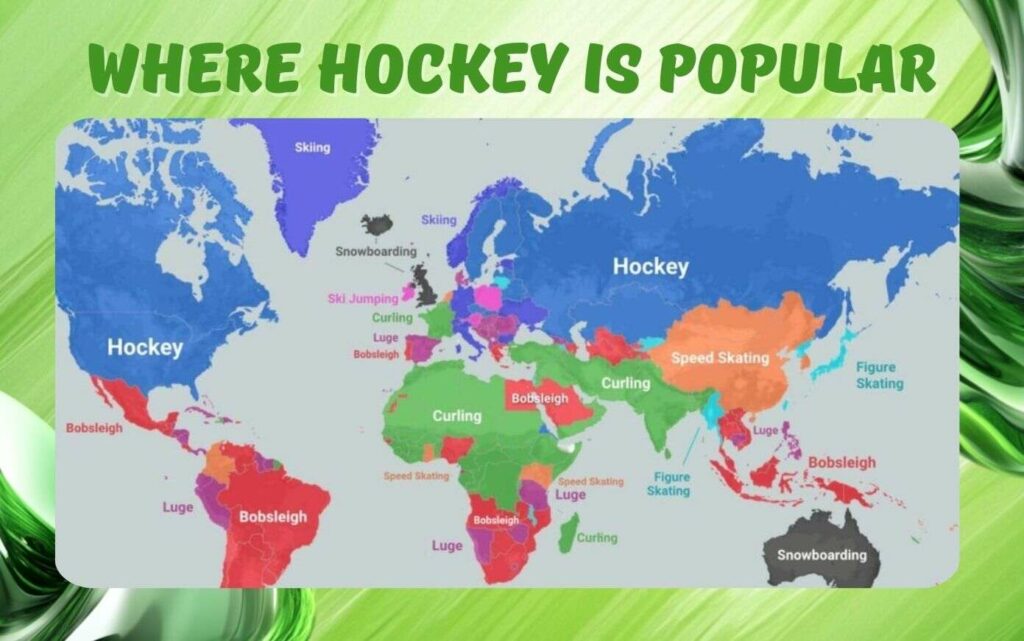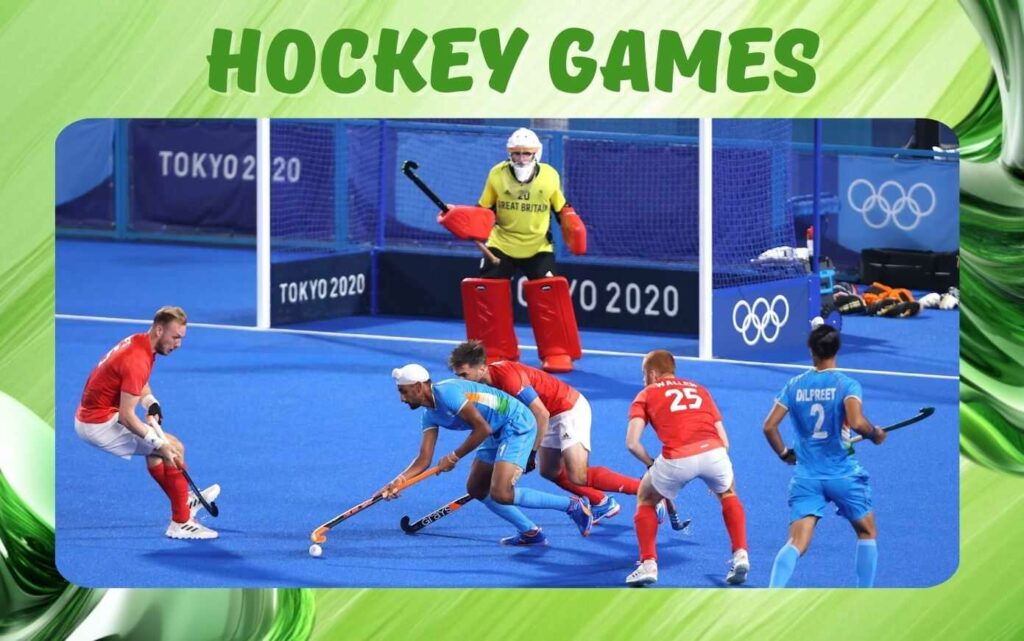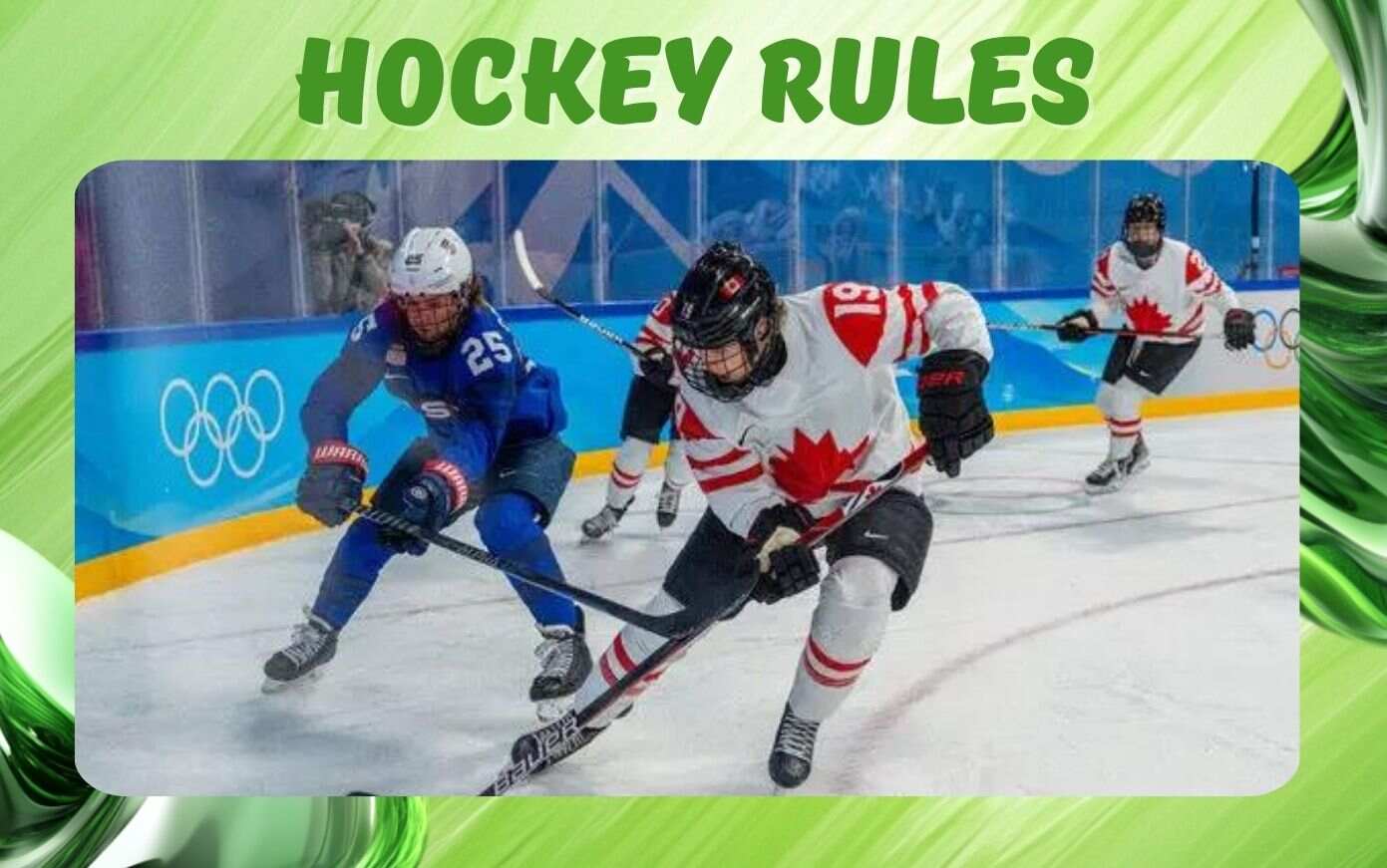When we hear the word “hockey,” our minds often conjure images of fast-paced ice battles, razor-sharp skates, and the resounding thud of a puck hitting the net. But did you know that hockey isn’t confined to icy rinks alone? From frozen ponds to grassy fields, this beloved sport has diverse forms that captivate hearts across continents. Let’s lace up our skates and explore the thrilling world of hockey!
History of Hockey
The roots of modern hockey games stretch back almost 4,000 years. Historical references in Iran, Egypt, and Greece hint at early stick-and-ball games.
However, the birth of organized hockey and the drafting of its first rules occurred in the United Kingdom in 1876. Two pioneering clubs—Blackheath and Teddington—set the stage for a global phenomenon.
Countries Where Hockey is Popular

- Canada: The birthplace of ice hockey, Canada lives and breathes the sport. From frozen ponds to the NHL, hockey is ingrained in Canadian culture. Kids learn to skate almost as soon as they can walk, dreaming of hockey stardom.
- Russia: Ice hockey is a source of national pride in Russia. The Soviet-era ‘Red Machine’ set the standard for excellence, leaving a lasting legacy. The KHL (Kontinental Hockey League) showcases Russia’s athletic talent.
- Sweden: With its icy climate, Sweden embraces hockey fervently. The Swedish Hockey League (SHL) ranks among Europe’s top professional leagues. Swedish players excel globally, reinforcing their love for the game.
- Finland: Finland’s passion for ice hockey runs deep. The sport is embedded in national culture, with a strong track record in international competitions. Youth programs and national leagues nurture talent from an early age.
- United States: Ice hockey thrives in colder regions like the Northeast and Midwest. The NHL, featuring players from around the world, plays a significant role. The game combines skill, speed, and strategy.
What are the Different Types of Hockey Games?

- Ice Hockey: The classic form, played on a sheet of ice. Teams battle for goals using skates and sticks. NHL games consist of three 20-minute periods, with media timeouts and commercial breaks extending the excitement.
- Sledge Hockey: Also known as sled hockey or Para ice hockey, it’s played by athletes with physical disabilities. Players propel themselves on sleds using specially designed sticks.
- Field Hockey: Played on grass, field hockey emphasizes finesse and teamwork. It’s popular in countries like India, the Netherlands, and Australia.
- Ball Hockey: On hard cement floors, ball hockey swaps ice for sneakers. Teams compete with a ball instead of a puck.
- Street Hockey: An informal outdoor game, street hockey takes place on asphalt or concrete. Kids and adults alike play with rollerblades or sneakers.
- Roller Hockey: Played on roller skates, this variant combines speed and agility. It has both quad and inline versions.
How Long is a Hockey Game?
A typical hockey game consists of three periods, each lasting 20 minutes of play time, for a total of 60 minutes. However, with intermissions, stoppages, and potential overtime, the actual duration of a hockey game usually extends to about 2 to 2.5 hours. Here’s a breakdown of the time components:
- Three 20-minute periods: 60 minutes of play time.
- Two intermissions: Typically 15 to 18 minutes each.
- Stoppages: Timeouts, reviews, penalties, and other stoppages in play.
- Overtime: If the game is tied at the end of regulation, there is an overtime period which is typically 5 minutes in the regular season and 20 minutes in the playoffs. If still tied, a shootout may follow in the regular season, while playoff games continue with additional overtime periods until a winner is decided.
Hockey Players
A hockey team typically has 20 players on its roster for a game. This includes:
- 12 forwards: Usually divided into four lines of three players each (left wing, center, and right wing).
- 6 defensemen: Typically divided into three pairs.
- 2 goaltenders: One starting goaltender and one backup.
While only six players (including the goaltender) are on the ice at any given time, the team rotates players frequently to maintain high levels of energy and performance. This rotation allows for strategic line changes and keeps the players fresh throughout the game.
Men’s Hockey Tournaments
| Tournament | Description | Frequency | Level |
| Olympic Games | International tournament held every four years as part of the Winter Olympics. | Every 4 years | International |
| IIHF World Championship | Annual international tournament organized by the International Ice Hockey Federation (IIHF). | Annually | International |
| NHL Stanley Cup Playoffs | Championship playoffs of the National Hockey League to determine the league champion. | Annually | Professional (NHL) |
| World Cup of Hockey | International tournament organized by the NHL and NHLPA. | Irregular (Last held in 2016) | International |
| Kontinental Hockey League (KHL) Gagarin Cup | Championship playoffs of the KHL to determine the league champion. | Annually | Professional (KHL) |
| Spengler Cup | Annual invitational tournament held in Davos, Switzerland, typically around Christmas. | Annually | Club/Invitational |
| NCAA Men’s Ice Hockey Championship | Collegiate-level tournament in the United States to determine the national champion. | Annually | Collegiate (NCAA) |
| CHL Memorial Cup | Championship tournament of the Canadian Hockey League (CHL) for major junior hockey teams. | Annually | Junior (CHL) |
| IIHF World Junior Championship | Annual international tournament for national teams with players under 20 years old. | Annually | Junior International |
| IIHF U18 World Championship | Annual international tournament for national teams with players under 18 years old. | Annually | Junior International |
Women’s Hockey Tournaments
| Tournament | Description | Frequency | Level |
| Olympic Games | International tournament held every four years as part of the Winter Olympics. | Every 4 years | International |
| IIHF Women’s World Championship | Annual international tournament organized by the International Ice Hockey Federation (IIHF). | Annually | International |
| IIHF U18 Women’s World Championship | Annual international tournament for national teams with players under 18 years old. | Annually | Junior International |
| NCAA Women’s Ice Hockey Championship | Collegiate-level tournament in the United States to determine the national champion. | Annually | Collegiate (NCAA) |
| Premier Hockey Federation (PHF) Isobel Cup | Championship playoffs of the PHF (formerly NWHL) to determine the league champion. | Annually | Professional (PHF) |
| Professional Women’s Hockey League (PWHL) Championship | Championship playoffs of the newly formed PWHL to determine the league champion. | Annually | Professional (PWHL) |
| Canadian Women’s Hockey Championship (CWHL Clarkson Cup) | Championship playoffs of the former CWHL (ceased operations in 2019) to determine the league champion. | Annually | Professional (CWHL) |
| EuroHockey Women’s Championship | International tournament for European national teams. | Every 2 years | International |
| Four Nations Cup | International tournament featuring Canada, USA, Finland, and Sweden. | Annually | International |
| Women’s Ice Hockey at the Asian Winter Games | Regional tournament for Asian national teams held as part of the Asian Winter Games. | Every 4 years | International |
Hockey transcends borders, uniting fans in a shared love for the game. Whether on ice, grass, or pavement, the thrill of hockey echoes across continents. So next time you hear the slap of a stick against a puck, remember that hockey’s heart beats in many forms, each with its own magic.
